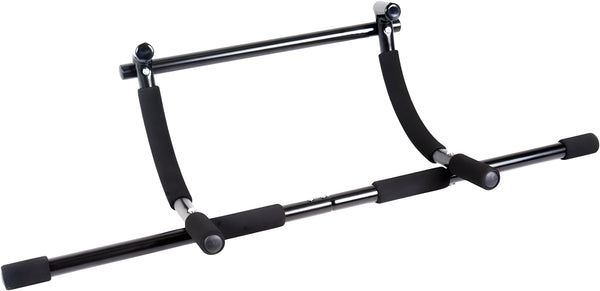Your Cart is Empty
June 03, 2023 3 min read
Pull up exercises are some of the most effective and versatile bodyweight exercises around. Whether you’re a beginner or an advanced fitness enthusiast, pull up exercises can help you reach your goals. Pull ups target multiple muscle groups in the upper body, including the back, chest, shoulders, arms and core. They also provide a great cardiovascular workout. With so many different variations to choose from, it’s easy to target specific muscle groups with pull up exercises.
Shop The Collection: Pull Up BarsWhen it comes to pull up exercises, there are several types to choose from. Each type of pull up exercise targets different muscles and offers different benefits. Here are some of the most common types of pull up exercises:
 Shop The Gear: CAP Barbell Xtreme Doorway Pull Up Bar, $27.99 USD
Shop The Gear: CAP Barbell Xtreme Doorway Pull Up Bar, $27.99 USD
Pull up exercises offer a number of benefits, including increased strength, improved posture, better balance, and increased flexibility. Here are some of the key benefits of pull up exercises:
Pull up exercises can be challenging, but they are also very rewarding. Here are some tips to help you get the most out of your pull up workouts:
Pull up exercises are some of the most effective and versatile bodyweight exercises around. They target multiple muscle groups in the upper body and offer a number of benefits, such as increased strength, improved posture, better balance, and increased flexibility. With so many different variations to choose from, it’s easy to target specific muscle groups with pull up exercises. Just make sure to focus on proper form and mix it up to get the most out of your workouts. Now get out there and start doing pull up exercises today!
Shipping Protection gives you peace of mind while saving you time and money.
Shipping Protection provides coverage for eligible orders that are lost or damaged in transit, or stolen after delivery has been confirmed by the carrier. MAGMA Fitness, through its partners, administers the protection program and may receive compensation for these services. Coverage is subject to the terms, conditions, and exclusions outlined in our Shipping Protection Terms & Conditions.